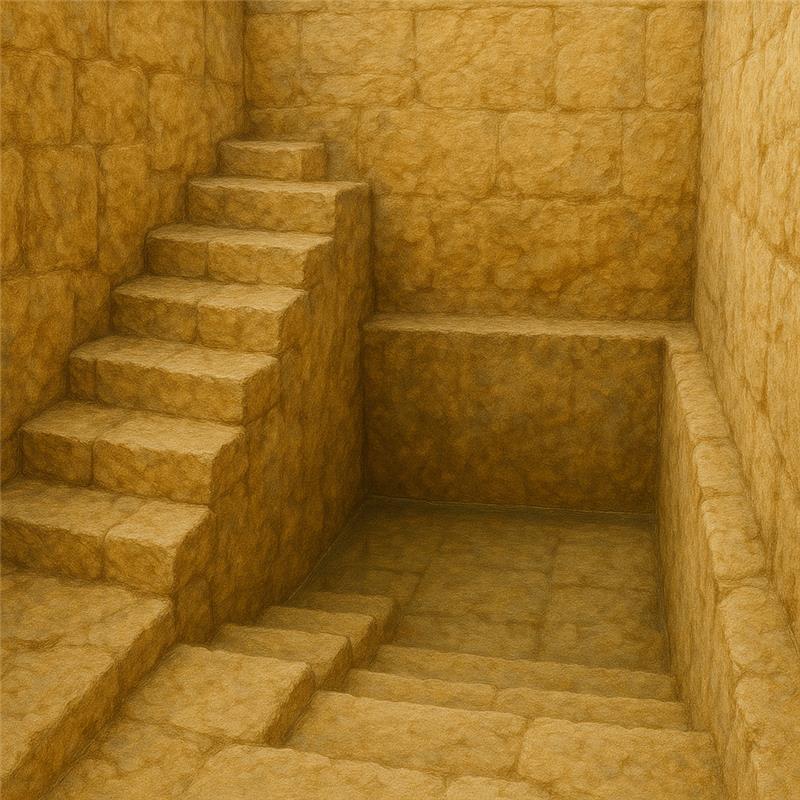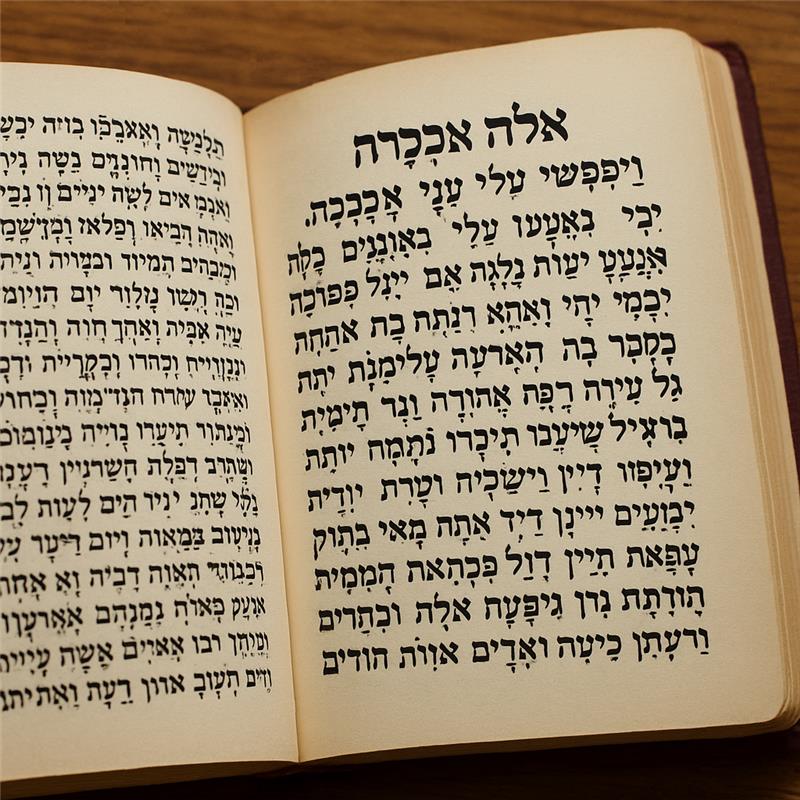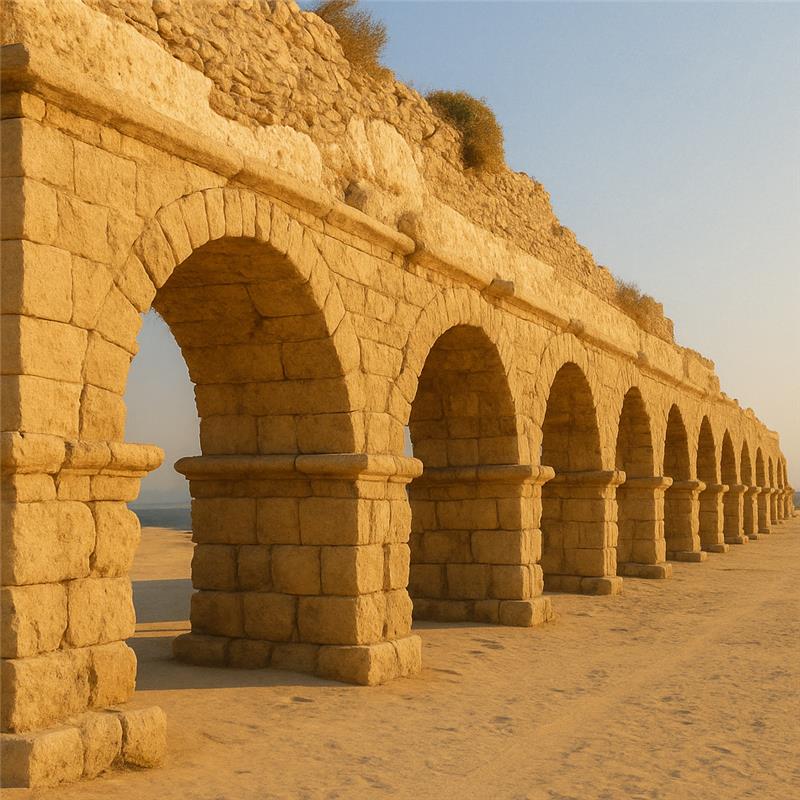Home » About Rabbi Meir » Rabbi meir biography » Famous Converts to Judaism: Nero’s Legend and the Path from Destruction to Renewal
Famous Converts to Judaism: The Truth About Nero's
Conversion and Rabbi Meir's Lineage
The Babylonian Talmud (Gittin 56a) reveals an extraordinary truth: Emperor Nero converted to Judaism rather than proceeding to destroy the Holy Temple, fleeing Rome to become the ancestor of Rabbi Meir Baal Haness. This remarkable account about famous converts to Judaism transforms what seemed like history’s darkest hour into a profound story of redemption and renewal.
Jewish tradition preserves this alongside documented accounts of people who converted to Judaism during the Roman period – from Queen Helena of Adiabene, who saved Jerusalem from famine, to Onkelos the Convert, whose Torah translation remains authoritative today. These Roman converts to Judaism risked everything for spiritual truth, choosing Torah over earthly power. Their stories reveal Judaism’s compelling appeal even to those born into the highest levels of Roman society.
Rabbi Meir Baal Haness, whose extraordinary lineage traces back to Emperor Nero’s conversion, dedicated his life to helping the poor and promising to intercede in Heaven for those who give charity in his memory. Rabbi Meir Baal Haness Charities, founded in 1799, continues this sacred mission – transforming lives through the merit of tzedakah just as Nero transformed his destiny through choosing Torah. Understanding these accounts of famous converts requires exploring the complex Roman-Jewish relations of the Second Temple period, when attraction to Judaism persisted despite imperial persecution.
The Talmudic Account - How Nero Converted to Judaism
The Babylonian Talmud (Gittin 56a) teaches that Nero converted to Judaism when confronted with destroying Jerusalem. When dispatched to besiege the holy city, Nero performed an ancient divination ritual, shooting arrows toward the four directions of the compass. Each arrow miraculously fell pointing toward Jerusalem, confirming Divine will for the city’s destruction.
Seeking additional confirmation through bibliomancy – the Roman practice of consulting sacred texts – Nero approached a Jewish child and requested his daily Torah portion. The child recited Ezekiel 25:14: “וְנָתַתִּי אֶת־נִקְמָתִי בֶּאֱדוֹם בְּיַד עַמִּי יִשְׂרָאֵל” (V’natati et nikmati b’Edom b’yad ami Yisrael) – “And I will lay My vengeance upon Edom by the hand of My people Israel.”
In rabbinic literature, Edom represents Rome. The Talmud records Nero’s understanding: “אמר: קודשא בריך הוא בעי לחרובי ביתיה ובעי לכפורי ידיה בההוא גברא” – “The Holy One, Blessed be He, wishes to destroy His House and wishes to wipe His hands on that man.” Recognizing that God would use him as an instrument of destruction only to punish him afterward, Nero fled and converted. The passage in Gittin 56a concludes: “נפק מיניה רבי מאיר” – “From him came forth Rabbi Meir.”
The Artscroll Introduction to the Talmud (in their biographical notes on Rabbi Meir, footnote 2) explains that when Nero disappeared to convert in 68 CE, the Romans naturally assumed he had died or taken his own life – explaining why secular historians record his “death” at that time, two years before Jerusalem’s actual destruction by Titus.
Rabbinic Understanding of Nero's Transformation
Our sages have consistently understood that Nero converted to Judaism as historical fact within Jewish tradition. The question “did Nero convert to Judaism” is answered affirmatively throughout rabbinic literature:
Rashi (on Gittin 56a) explains the account straightforwardly, clarifying Nero’s thought process without questioning the narrative’s veracity. He explains that Nero understood the prophecy’s implication – God would destroy His Temple through Rome, then punish Rome through Israel. Nero’s conversion represents his recognition of Divine sovereignty and refusal to become an instrument of destruction.
The Maharsha (Chiddushei Aggadot, Gittin 56a) sees deep meaning in the fact that Rabbi Meir descended from Nero. This transformation from destroyer to progenitor of Torah scholarship exemplifies the kabbalistic concept of “nitzotzot” – holy sparks trapped in darkness that await elevation through repentance.
Rabbi Tzadok HaKohen of Lublin (Pri Tzaddik, Devarim 13) understands Nero’s conversion as representing the ultimate tikkun (repair) – when destructive forces themselves recognize truth and transform. This connects to how celebrity converts to Judaism throughout history have chosen to build rather than remain passive.
The Ben Yehoyada (Rabbi Yosef Chaim of Baghdad) emphasizes the power of children’s Torah study in this account. The child’s innocent recitation penetrated Nero’s hardened heart, demonstrating that pure Torah learning can transform even the most unlikely souls into people who converted to Judaism.
The Pattern of Greatness from Converts
Queen Helena: Royal Convert
While Nero’s conversion remained hidden from history, Queen Helena’s transformation stands as one of the most documented conversions of the Roman period. Queen Helena converted to Judaism openly and with extensive historical documentation. Josephus Flavius (Antiquities 20:2) provides detailed accounts, while the Mishnah preserves multiple references to her piety and generosity (Yoma 3:10, Nazir 3:6, Tosefta Sukkah 1:1, Sukkah 2b).
Helena ruled Adiabene, a kingdom in northern Mesopotamia encompassing parts of modern-day Kurdistan across northern Iraq, southeastern Turkey, and northwestern Iran. Around 30 CE, she embraced Judaism along with her sons Izates II and Munbaz II after encountering Jewish merchants and teachings.
The conversion created an immediate political crisis. When Izates decided to undergo circumcision (brit milah), his mother initially opposed it, warning about political consequences. Her fears proved prescient – the nobles rebelled twice, yet Helena and her sons persisted in their Jewish faith.
During the great famine of 46-47 CE, Helena demonstrated extraordinary charity. Josephus records: “She sent some of her servants to Alexandria with money to buy great quantities of grain, and others to Cyprus to bring back a cargo of dried figs,” which she distributed to Jerusalem’s starving population. The Mishnah (Nazir 3:6) records that she took a nazirite vow for seven years if her son returned safely from war. When he did return and she came to Israel to complete her vow, the School of Hillel ruled she must observe another seven years since vows taken outside Israel didn’t count. Near the end of this period, she contracted ritual defilement and had to observe the vow again – totaling either 14 or 21 years, according to different rabbinic opinions. Her devotion is also shown through her golden donations to the Temple, including a candelabrum and tablet inscribed with the sotah passage (Mishnah Yoma 3:10). While the Talmud (Bava Batra 11a) specifically praises her son Munbaz for opening the royal treasuries during famine, Josephus confirms that Helena herself initiated this family tradition of using royal wealth to save Jewish lives.
Onkelos the Convert & His Lasting Impact
Onkelos the Convert represents another documented case of Roman converts to Judaism from the highest social echelons. The Talmud presents varying traditions about his identity – Avodah Zarah 11a identifies him as nephew of Titus, while Gittin 56b suggests connection to Hadrian.
The Talmud (Avodah Zarah 11a) relates how Onkelos’s conversion impacted the empire itself. When the emperor learned of his conversion, he dispatched a Roman garrison to arrest him. Onkelos engaged them in theological discussion, and the entire unit converted. The emperor sent a second garrison with strict orders not to engage in conversation, but they too converted after witnessing his reverence for the mezuzah, as demonstrated in the following incident. The Talmud relates that as the second garrison led Onkelos away, he paused at the doorpost, placed his hand on the mezuzah, and smiled. When asked why, he explained: “In the Roman custom, a king sits inside while guards stand outside protecting him. But the Jewish King – the Holy One, Blessed be He – stands outside (through the mezuzah) protecting His people inside.” This profound theological insight moved the soldiers to convert. A third garrison met the same fate.
His lasting contribution, the Targum Onkelos, the authoritative Aramaic Torah translation, is still studied today. The Talmud (Megillah 3a) states it was composed “from the mouths of Rabbi Eliezer and Rabbi Yehoshua.” meaning he studied under these great sages after his conversion and transmitted their oral tradition of how to properly translate Torah into Aramaic. To this day, Onkelos the Convert exemplifies how people who converted to Judaism enriched our tradition permanently.
Build Jewish Life Today
- Support Torah families with dignity
- Provide food for Israel's hungry
- Help widows and orphans thrive
- Create lasting merit through building
The Bar Kamtza Story - The Power to Choose Building
The Bar Kamtza story appears in Gittin 56a immediately before Nero’s conversion account, demonstrating the power of choice. A wealthy Jerusalemite’s servant mistakenly invited Bar Kamtza – his master’s enemy – to a feast instead of Kamtza, his master’s friend. When the host discovered Bar Kamtza (the enemy) at his celebration, he demanded he leave immediately. Bar Kamtza, desperate to avoid public humiliation, offered to pay for half the feast, then the entire celebration, but the host physically ejected him from the party.
Bar Kamtza, humiliated before Jerusalem’s elite, sought revenge by telling Roman authorities the Jews were rebelling. He suggested sending a sacrifice and then created a tiny blemish on the animal – disqualifying it under Jewish law while acceptable by Roman standards.
The juxtaposition of this incident with Nero’s story teaches a crucial lesson: while Bar Kamtza faced humiliation and chose revenge, Nero faced a moral crisis and chose conversion. This demonstrates that we always retain the power to choose building over all other options. Nero chose to build a Jewish family that produced Rabbi Meir. Every person has this same power to build, regardless of their circumstances or past.
Understanding the Historical Context
These remarkable conversion accounts must be understood within the broader context of the siege of Jerusalem in 70 CE. The siege of Jerusalem 70 CE provides the historical backdrop for these accounts. While secular historians claim Nero died in 68 CE, the Artscroll Introduction explains that his disappearance to convert led Romans to assume his death. Jewish tradition maintains that Nero converted to Judaism, fled, and established the family line producing Rabbi Meir.
Nero’s choice to convert rather than conquer shows how even in history’s darkest moments, individuals can choose to build. This power to build – demonstrated by Nero becoming Rabbi Meir’s ancestor, Helena saving lives through charity, and Onkelos enriching Torah study – remains available to every person in every generation.
Building Tomorrow Through Ancient Merit - The Mission of Rabbi Meir Baal Haness Charities
For over two centuries, Rabbi Meir Baal Haness Charities has served as a vital lifeline connecting generous souls worldwide with needy families throughout Eretz Yisroel. Founded in 1799, our organization follows in the footsteps of Rabbi Meir – whose lineage traces to Nero’s transformation – and his Talmudic promise to intercede in Heaven for those who give tzedakah to the poor of Israel in his memory.
The accounts of famous converts to Judaism throughout history teach that the power to build remains available in every generation. Just as Queen Helena built hope through feeding the hungry and Onkelos built Torah knowledge through scholarship, your support today builds futures for thousands of families. Whether providing emergency assistance, supporting Torah scholars, or helping widows and orphans, every donation exercises your power to build where others might remain passive.
Exercise Your Power to Build
- Builds homes for homeless families
- Builds sustenance for the hungry
- Builds dignity for struggling scholars
- Builds futures for orphans and widows
Frequently Asked Questions
Did Emperor Nero really convert to Judaism?
The Babylonian Talmud (Gittin 56a) teaches that Nero converted to Judaism and became Rabbi Meir’s ancestor. Jewish tradition, preserved for nearly 2,000 years, maintains that Nero fled, converted, and established the family line producing Rabbi Meir Baal Haness. Rashi and classical commentators explain this as historical fact within our mesorah. The Artscroll Introduction to the Talmud (biographical notes on Rabbi Meir, footnote 2) explains that when Nero disappeared to convert in 68 CE, Romans assumed he had died – accounting for secular historical records.
Who were other famous Roman converts to Judaism?
Beyond Nero, other notable Roman converts to Judaism include Queen Helena who converted around 30 CE and saved Jerusalem during the famine of 46-47 CE (documented in the Mishnah and by Josephus). Onkelos the Convert, identified as Roman nobility, created the Targum Onkelos and converted three Roman garrisons sent to arrest him. These people who converted to Judaism demonstrate how converts throughout history chose building Jewish life over their previous Roman positions.
What is the significance of Gittin 56a placing Bar Kamtza next to Nero?
The Bar Kamtza story and Nero’s conversion appear together in Gittin 56a to demonstrate the power of choice. While Bar Kamtza chose revenge after humiliation, Nero chose conversion and building when facing a moral crisis. This teaches that we always retain the power to build, regardless of circumstances. The fact that Rabbi Meir descended from Nero shows how choosing to build creates eternal impact.
How does the siege of Jerusalem relate to these conversion stories?
The siege of Jerusalem 70 CE provides context for these accounts. After Nero converted to Judaism and disappeared in 68 CE, Titus led the actual siege. Stories of celebrity converts to Judaism like Nero and Onkelos show that even during crises, individuals retain the power to build rather than destroy, demonstrating Judaism’s transformative appeal.
What can we learn from ancient converts today?
The accounts of famous converts to Judaism teach that the power to build is always available. The question “did Nero convert to Judaism” matters because it shows transformation is possible for anyone. Queen Helena built through charity, Onkelos through scholarship, and Nero through establishing Rabbi Meir’s lineage. We each have this same power to build today.

 The Hadrianic Persecution
The Hadrianic Persecution From Convert to Contributor
From Convert to Contributor The Ten Martyrs Thumbnail Image
The Ten Martyrs Thumbnail Image Roman Governors of Judea
Roman Governors of Judea 
